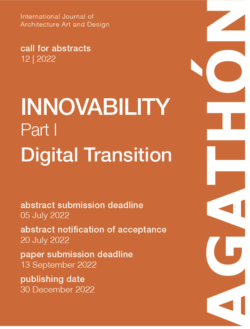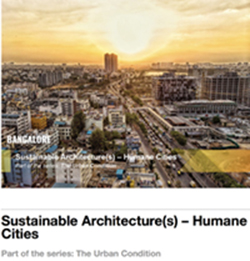ISSN (online): 1996-1944
Call of the Journal:
- Advanced Carbon Materials in Water Treatment or Separations Technology
- Advanced Functional Hybrid Materials for Novel Biomolecular Electronics
- Advances in Biomaterials | Design, Synthesis, Characterisation and Biomedical Application
- Advances in Construction and Building Materials
- Advances in Green Construction Materials
- Assessment of Metallurgical and Mechanical Properties of Welded Joints via Numerical Simulation and Experiments
- Carbon Compounds-Reinforced Ceramics
- Concrete and Waterproofing Materials | Development of Waterproofing Technology for Buildings and Civil Concrete Structures
- Corrosion Inhibitors for Steel | Experimental and Theoretical Studies
- Damage and Failure of Polymers, Polymer-Like Materials, Adhesives and Polymer Nanocomposites
- Development of Energy Storage or Conversion Element Based on Various Nano Materials
- Dyes | Synthesis, Properties, and Applications
- Dynamic Behavior of Ceramic Composites
- Flexible Sensors and Actuators for Novel Wearable Solutions
- Fundamentals and Applications of Bionano Sensor Techniques
- Graphene Foam Based Composites
- Growth and Application of Foam-Based Materials
- High Performance Concrete
- Hybrid Noble Metal/Graphene Aerogels | Synthesis, Characterization and Applications for Chemical Sensing and Biosensing
- Hydrogen Storage and Fuel Cells | Materials, Characterization and Applications
- Load Test and Numerical Analysis on Construction Materials
- Machining and Surface Properties of Steel Parts
- Materials under Extreme Conditions | Technologies for CRMs Reduction, Substitution and Recovery
- Microplastics and Nanoplastics | From Resource to Pollution
- Mineral-Bonded Composites for Enhanced Structural Impact Safety
- Modification and Processing of Biodegradable Polymers
- Nanostructured Semiconductors for Photoinduced Applications
- Novel Inorganic Adsorbents for Environmental Purification
- Numerical Simulation and Experimental Studies of Wave Phenomena in Composite Materials
- Performance Research of Polyurethane Foams and Composites
- Physics, Electrical and Structural Properties of Dielectric Layers
- Precision and Ultra-Precision Subtractive and Additive Manufacturing Processes of Alloys and Steels
- Processing and Thermal Properties of Hybrid Composites
- Recent Advances in 3D Printing for Biomaterials
- Recent Progress in the Development, Material Properties, and Post-Processing of Additively Manufactured Components
- Silica and Silica-based Materials for Biotechnology, Polymer Composites and Environmental Protection
- Study on the Modification and Compressive Properties of Concrete Buildings Materials
- Superconductors for Opto-Nano and Micro-Electro-Mechanical Systems (O-N/MEMS)
- Synthesis and Characterization of Hybrid Nanomaterials and Nanocomposites
- Synthesis, Properties and Applications of Polymer Blends
- Testing of Materials and Elements in Civil Engineering
- The Science and Technology of 3D Printing
Feb
2021
Dec
2021
Polymers, polymer-like materials, as well as adhesives and polymer composites, are ubiquitous in the real life and are conveniently and easily used in different applications, ranging from engineering to biomedical fields. Moreover, many biological tissues and biomaterials have a polymeric-like microstructure, and the comprehension of their responses, as well as of the degrading phenomena, can take advantage of the mechanics-based damage occurring in polymers, leading to a deeper knowledge of their functionalities and stimuli-responsive adaptability. Polymeric nanocomposites, obtained by adding nanofillers to a polymer with the aim to enhance some mechanical property of the matrix, are also of great interest in advanced applications and require a proper knowledge of the involved micromechanical aspects. Damage and failure mechanisms taking place in all the above mentioned materials are far to be fully understood, because of their complex microstructure, highly mechanical nonlinear response, large deformation and strain-rate effects, influence of environmental factors (temperature, chemical degradation, etc.). The aim of this Special Issue is to gather the latest researches in the field, especially those dealing with the theoretical, numerical and experimental study of damage and failure in polymers and polymer-like materials (biomaterials), adhesives and polymers nanocomposites, all of them being characterized by a complex, entangled, amorphous network-like microstructure. In particular, the Special Issue is devoted, but not limited, to the following aspects: Damage and failure due to static or repeated mechanical actions, delamination, void growth, thermal or chemical actions, environmental degradation, strain rate effects, etc. Of particular interest to the Special Issue will be the microscale and multiscale approaches to the above mentioned aspects; the goal is to provide an up-to-date and comprehensive overview on the problem of assessment and prediction of damage and failure and on the mitigation (repair and healing) of their effects in polymers, polymer-like materials, adhesives and polymers nanocomposites.
Keywords: Polymers, polymer-like materials; Adhesives; Polymer nanocomposites; Damage; Failure; Fracture; Material repair and healing; Micromechanics modelling.
Damage and Failure of Polymers, Polymer-Like Materials, Adhesives and Polymer Nanocomposites
Polymers, polymer-like materials, as well as adhesives and polymer composites, are ubiquitous in the real life and are conveniently and easily used in different applications, ranging from engineering to biomedical fields. Moreover, many biological tissues and biomaterials have a polymeric-like microstructure, and the comprehension of their responses, as well as of the degrading phenomena, can take advantage of the mechanics-based damage occurring in polymers, leading to a deeper knowledge of their functionalities and stimuli-responsive adaptability. Polymeric nanocomposites, obtained by adding nanofillers to a polymer with the aim to enhance some mechanical property of the matrix, are also of great interest in advanced applications and require a proper knowledge of the involved micromechanical aspects. Damage and failure mechanisms taking place in all the above mentioned materials are far to be fully understood, because of their complex microstructure, highly mechanical nonlinear response, large deformation and strain-rate effects, influence of environmental factors (temperature, chemical degradation, etc.). The aim of this Special Issue is to gather the latest researches in the field, especially those dealing with the theoretical, numerical and experimental study of damage and failure in polymers and polymer-like materials (biomaterials), adhesives and polymers nanocomposites, all of them being characterized by a complex, entangled, amorphous network-like microstructure. In particular, the Special Issue is devoted, but not limited, to the following aspects: Damage and failure due to static or repeated mechanical actions, delamination, void growth, thermal or chemical actions, environmental degradation, strain rate effects, etc. Of particular interest to the Special Issue will be the microscale and multiscale approaches to the above mentioned aspects; the goal is to provide an up-to-date and comprehensive overview on the problem of assessment and prediction of damage and failure and on the mitigation (repair and healing) of their effects in polymers, polymer-like materials, adhesives and polymers nanocomposites.
Keywords: Polymers, polymer-like materials; Adhesives; Polymer nanocomposites; Damage; Failure; Fracture; Material repair and healing; Micromechanics modelling.
ADS-Astrophysics Data System, AGORA(FAO), CAB Abstracts(CABI), Chemical Abstracts (ACS), Current Contents-Engineering, Computing & Technology (Clarivate Analytics), DOAJ, Ei Compendex/Engineering Village (Elsevier), Genamics JournalSeek, Global Health (CABI), HINARI (WHO), Inspec (IET), Journal Citation Reports/Science Edition (Clarivate Analytics), Julkaisufoorumi Publication Forum (Federation of Finnish Learned Societies), Norwegian Register for Scientific Journals, Series and Publishers (NSD), Polymer Library (Smithers Rapra), PubMed (NLM), Science Citation Index Expanded – Web of Science (Clarivate Analytics), Scopus (Elsevier), Web of Science (Clarivate Analytics), Zetoc (British Library), CLOCKSS (Digital Archive), e-Helvetica (Swiss National Library Digital Archive), PubMed Central (NLM), Academic OneFile (Gale/Cengage Learning), EBSCOhost (EBSCO Publishing), Energy & Power Source (EBSCO), Engineering Source (EBSCO), Google Scholar, J-Gate (Informatics India), Materials Science & Engineering (ProQuest).
Info at: www.mdpi.com/journal/materials/apc
Guest Editor
Prof. Roberto Brighenti









